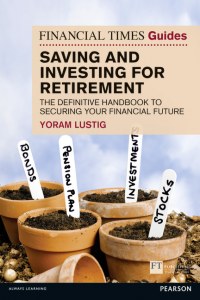Saving for retirement is one of our most important financial activities.

Put simply, for most of us the amount we save during our working life determines our quality of life after we stop working. Financially-secured golden years need saving. The question is whether you are saving enough.
The answer has two elements. First, estimate how much savings you are likely to need when retiring. Second, think what you can realistically do to achieve your desired saving target. These are both personal considerations, linked to your specific circumstances and ambitions.
Estimating your retirement’s saving target is not easy. Retirement may be many years into the future. Many relevant questions are yet to be answered. How do you want to live? When is retirement likely to start? How long will it last? Where are you going to live? Who will need your support? Do you own your home?
Try visualising your life post retirement, broadly answering these questions. Using some simple calculations, try to estimate your post-retirement expenses. A starting point could be your current expenses, adjusted for post-retirement lifestyle. Some expenditure will be lower, such as commuting or perhaps mortgage payments. Others will be higher, such as healthcare and heating. Roughly evaluate your annual income needs.
As a rule of thumb, maintaining your current standard of living requires between 50% and 80% of your current gross income. Lower earners tend to be at the 80% end, while higher earners tend to be at the 50% end. This is because low earners spend a higher portion of income on necessities, the need for which continues after retirement. Two helpful free online links are www.minimumincome.org.uk and www.jrf.org.uk.
Once you know your approximated annual income, use current annuity rates to estimate the saving target needed to generate this income. Annuity is a financial product you can buy from an insurance company, promising to pay income for the rest of your life. Annuity rates are readily available on the Internet.
Annuity rate is the percentage the annuity pays every year on the money used to purchase it. Rates depend on prevailing market conditions (such as long-term gilt yields), each annuity’s specific features and your circumstances (such as age and health).
If current annuity rate is 5%, for instance, it means you receive an annual income of £5,000 on each £100,000 used to buy the annuity. If you conclude you will need a post-retirement annual income of £40,000, it means you need to save about £800,000.
So far we answered how much savings you should accumulate by retirement. Next is how to do it.
A number of potential sources are available for pension income. You may be eligible to State Pension. Check whether it is so at www.gov.org. Full State Pension is little over £8,000 per year, paid from State Pension Age (between 60 and 68). You need 35 years of National Insurance Contributions to achieve full rate.
You may be a member of an occupational defined benefit (so called final salary) pension scheme. Your employer can tell you whether you are a member and if so what your pension income is likely to be and what is the scheme’s normal retirement age. Such pension, similar to annuity, pays income for life. Unlike annuity, you do not need to purchase it from an insurance company.
You may be a member of a defined contribution (money purchase) pension scheme organised by your employer (check with the Human Resources department) or you can arrange a private pension. Your employer may contribute to your pension and you may do so as well.
Use a free online pension calculator to work out the amount of contributions into your money purchase pension (your employer’s and yours) required to reach your saving target. One calculator is available at www.moneyadviceservice.org.uk.
As a rule of thumb, a recommended contribution rate is about 15% of your income. When younger the rate could be lower, as current expenses are higher and salary is lower. When older the rate could be higher, as current expenses are lower and salary is higher. Target an average 15% over your working life.
How contributions translate into target saving amount would depend on the length of time you save and how you invest your savings. Investing prudently and smartly can augment your savings over time. Income and gains are shielded from tax while within the pension. Keeping the money in cash might not even maintain its purchasing power when considering inflation.
In addition to pensions, other ways to save for retirement include saving accounts (such as tax-efficient ISAs), purchasing your home and properties to let. The key is diversifying your sources of income and ways you save and invest to accommodate your specific needs.
For example, State Pension, final salary pension and annuities can provide minimum income for basic needs for as long as you live. Buy your home since you need a roof over your head. Defer taking pension if you can to increase payments. Use ISAs and investments to provide additional income and flexibility to tap the cash when needed. Buy-to-let or investments in private business allow accumulating additional wealth.
Whatever you decide to do, start today, educate yourself, take professional advice, plan, follow your plan, minimise taxes and charges, diversify your investments and sources of income and maintain flexibility to be able to adapt to changing circumstances. Do not neglect your future.
 About the author
About the author
Yoram Lustig is the author the new Financial Times Guide: Saving and Investing for Retirement.
It is out now, priced £26.99 from FT Publishing, available from Amazon.








